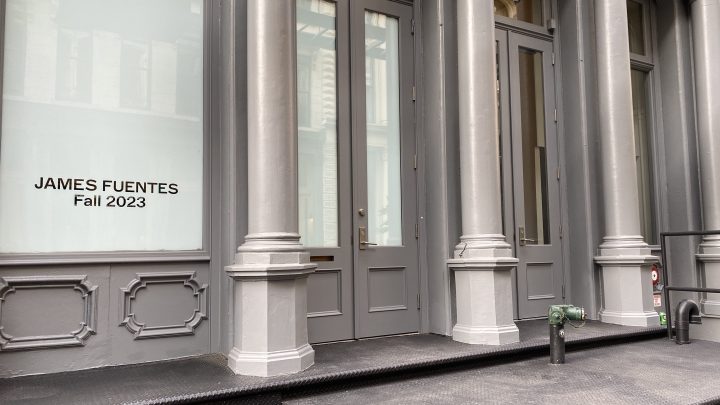
New York galleries flock to lower Manhattan’s Tribeca

New York City is one of the biggest capitals of the art world, and as such, it’s home to hundreds of galleries, which have a history of clustering together in just a handful of neighborhoods. Over the years, the city’s gallery districts have included Midtown, Soho and Chelsea, among others. Now, most recently, that includes Lower Manhattan’s Tribeca.
Many New York galleries sign 10- to 15-year leases. But once their leases expire, many gallery owners find that the community they’ve called home for years has completely transformed — often pushing or pricing them out.
Stefania Bortolami experienced this firsthand. She moved her gallery to a former warehouse in Chelsea in 2010 after 5 years in another space in the neighborhood. Art galleries like Bortolami’s helped gentrify Chelsea over the next several years. Eventually, the gallery’s building was redeveloped into office spaces, and Bortolami was forced to look elsewhere.
“One thing that I noticed is that in this particular area of Tribeca, there was nothing. It was really kind of empty,” said Bortolami, who moved the gallery to the Lower Manhattan neighborhood in 2017.
Bortolami remembers only about eight galleries in Tribeca during one of her first events. Now, there are around 60 — much of that growth occurred in the last few years, according to a March Artnet News analysis.
Now, crowds of art collectors and tourists weave through Tribeca’s cobblestone streets to check out the area’s dozens of gallery openings on the weekends.
Jonathan Travis, a real estate broker and visual art aficionado, is one of the key figures behind the influx of galleries in the area. He’s negotiated about 35 Tribeca gallery leases.
He said gallerists are attracted to Tribeca for its subway accessibility, the possibility of getting more space for the money compared to other art districts, and the number of ground-level commercial spaces that are often landmarked.
Travis also mentions galleries love its “old school neighborhood, New York feel,” which is becoming a rarity as more glass and steel structures appear around the city.
“So when you put all those pieces together, it made a lot of sense from a lot of different perspectives of why this neighborhood became the next kind of major gallery hub in New York,” Travis said.
But now that the pandemic is over and the neighborhood is more popular, there are fewer deals on rent.
Still, more galleries are expected to arrive in Tribeca this year, including one run by James Fuentes, a New York native who has always been fascinated by gallery migration and the city’s architectural history.
“I’m excited about showing art in Tribeca in this cast iron building that has wood floors and tin ceilings and this kind of nostalgic architecture that I’ve always loved,” he said of his new space.

Fuentes’s Tribeca rent is almost twice as much as his Lower East Side location. But he’s getting about 800 more square feet and predicts that his business will double due to foot traffic.
“So that rent increase is totally worth it,” he said.
That’s because a cluster of galleries is attractive to potential art buyers, critics and the like who prefer to see a lot of art in one trip.
But not everyone has been able to stay in Tribeca to enjoy the recent boom.
Magdalena Sawon co-runs and co-founded Postmasters. The 38-year-old gallery specializing in digital art like video and NFTs was financially impacted during the pandemic. After nearly a decade in Tribeca — it moved in even before the wave Bortolami was a part of — the gallery had to leave the area last year.
“In Tribeca, you have glorious spaces for which prominent and financially stable galleries — they can afford that much easier than us,” she said.
But 2022 wasn’t the first time Postmasters had to relocate. The gallery has arguably been an early adopter in each of its previous locations from the East Village, Soho to Chelsea. And now?
“We essentially work nomadically,” said Sawon, who finds empty spaces throughout the city for specific exhibitions and rents them short-term.
While the gallery now doesn’t have an extended brick-and-mortar presence, Sawon believes good art can survive any space, maybe even any location.
For the remaining 60 or so galleries in the area, they too could face potential relocation down the line. “We all have 10-, 15-year leases,” Bortolami said. “And once the leases finish, we have to see how the landlords behave.”
But at least she won’t have to worry about that until 2031.
There’s a lot happening in the world. Through it all, Marketplace is here for you.
You rely on Marketplace to break down the world’s events and tell you how it affects you in a fact-based, approachable way. We rely on your financial support to keep making that possible.
Your donation today powers the independent journalism that you rely on. For just $5/month, you can help sustain Marketplace so we can keep reporting on the things that matter to you.











